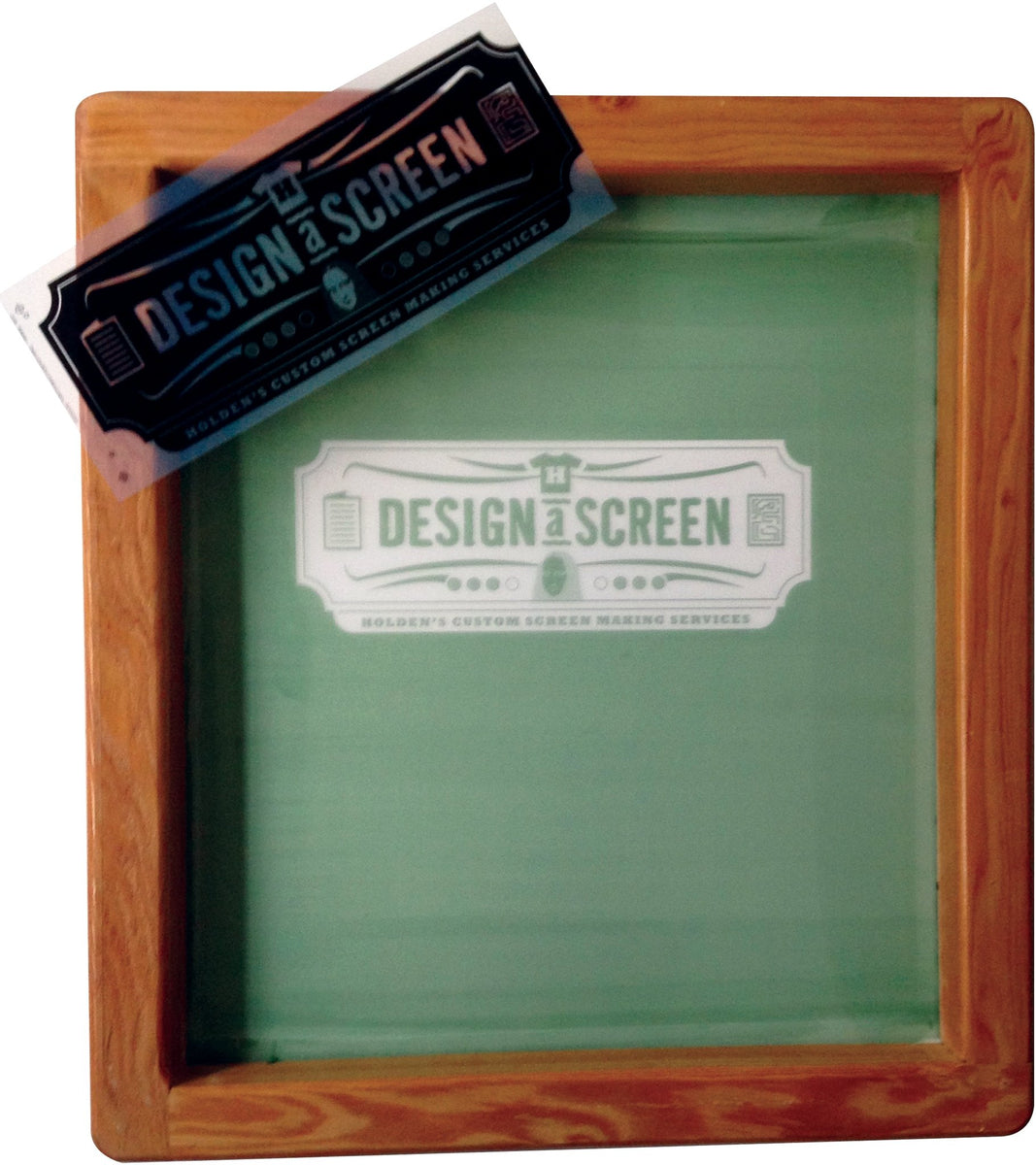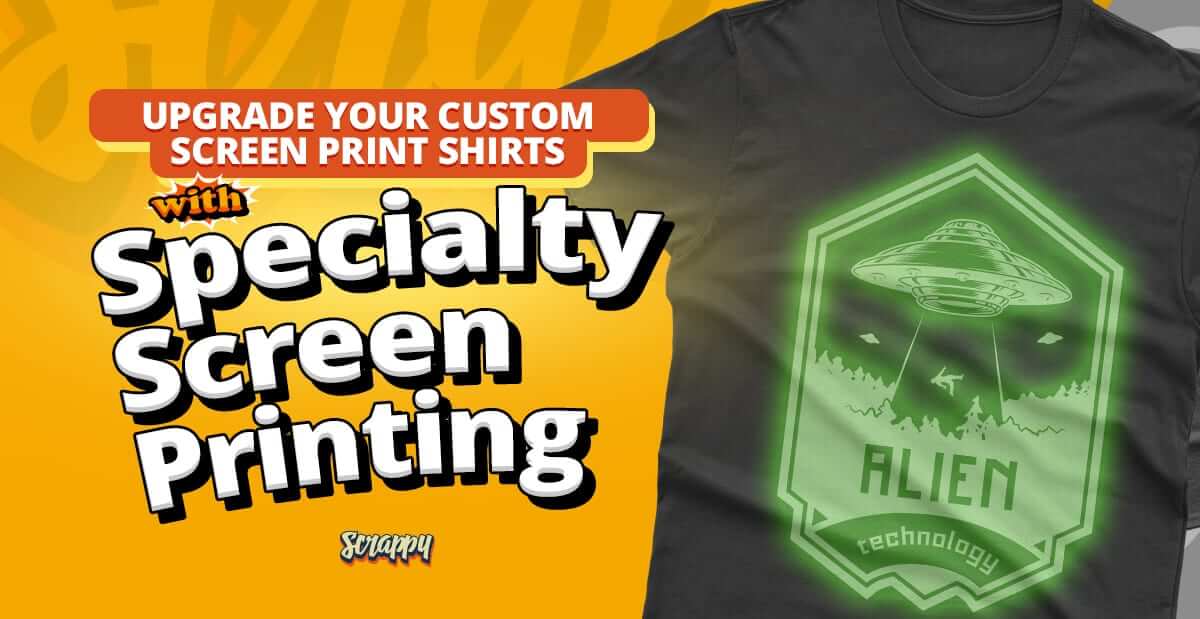High-End Silk Screen Printing for Premium Garments
High-End Silk Screen Printing for Premium Garments
Blog Article
Screen Printing Uncovered: Everything You Required to Find Out About Tee and Garment Printing Strategies
If you've ever before wondered exactly how those dynamic designs wind up on your favored tees, you remain in the ideal place. Screen printing is a fascinating technique that combines art with method, using limitless opportunities for creativity. Understanding the basics, from tools to ink choices, can substantially impact your results. Ready to check out the important aspects that make display printing an art form? Let's reveal the information that can raise your tasks.
The Basics of Screen Printing: Exactly How It Functions
When you plunge into screen printing, you'll discover it's both an art and a science. At its core, display printing involves developing a pattern, or display, that permits ink to travel through only in particular areas (screen printing kit). You begin by choosing your layout and preparing your screen with a light-sensitive emulsion. As soon as you subject this emulsion to light, it hardens, leaving your layout as a negative area.
Placement the display over the textile, after that utilize a squeegee to push ink via the screen onto the garment. Each step is essential, and understanding them will boost your display printing skills, changing easy garments right into unique, meaningful pieces.
Kinds of Display Printing Methods
As soon as you understand the fundamentals of display printing, it's time to discover the numerous methods that can raise your styles. One prominent technique is standard screen printing, where ink is pressed with a stenciled display. This method is excellent for bold, dynamic shades. There's water-based ink printing, which offers a softer feel and is environment-friendly, however it calls for a various method to treating.
An additional choice is plastisol printing, recognized for its longevity and brilliant colors, making it a favored for lots of brands. Experiment with halftone printing to create gradient impacts and complex styles.
Necessary Tools for Display Printing
To attain sensational outcomes in screen printing, having the appropriate equipment is fundamental. You'll require a sturdy screen printing structure, which holds the mesh that transfers your design onto the garment. Next off, invest in premium squeegees; these are important for using ink uniformly across the display.
Choosing the Right Inks and Products
When selecting inks and products for display printing, you need to think about the sort of ink that functions finest for your project. Think of textile compatibility to ensure your layouts look last and fantastic lengthy. Discover environment-friendly ink choices to make your printing process a lot more lasting.
Types of Screen Inks
Selecting the ideal screen ink is essential for achieving lively, long lasting prints that meet your job's demands. There are several kinds of display inks to check out. Specialized inks, such as metal or glow-in-the-dark, can add distinct impacts to your designs.

Textile Compatibility Considerations
Comprehending material compatibility is important for accomplishing top quality screen prints, specifically since various materials react uniquely to numerous inks. When selecting inks, think about the textile kind-- cotton, polyester, or blends. For cotton, water-based inks work well, providing softness and breathability. Polyester, on the various other hand, typically needs plastisol inks for much better bond and vibrant colors. If you're printing on blends, you might require to make use of a mix of both kinds. Always test your inks on example fabric to guarantee they stick appropriately and maintain color stability. Additionally, maintain in mind that material weight and texture can impact the final end result, so choosing the right ink and product combination is essential for your job's success.
Eco-Friendly Ink Options
Environmentally friendly inks are becoming a prominent selection for screen printers that wish to minimize their environmental effect while keeping top quality. When selecting inks, take into consideration water-based inks, which are much less dangerous and easier to tidy up compared to typical solvents. These inks bond well with fabrics, delivering lively results without hazardous chemicals. You could also explore eco-solvent inks that utilize less unpredictable natural compounds (VOCs), making them a safer option for both your health and wellness and the world.
Additionally, search for inks made visit the website from renewable energies, such as soy or vegetable-based alternatives. By selecting the ideal inks and materials, you'll not only create spectacular designs but also contribute to a more sustainable printing procedure. Make the button, and your prints will certainly mirror your dedication to the atmosphere!
Preparing Your Design for Display Printing

File Format Demands
To assure your design looks sharp and vivid on fabric, you'll need to pay very close attention to file style requirements for display printing. Start with vector data like AI or EPS, as they can be scaled without shedding quality. If you utilize raster images, choose for high-resolution documents, such as TIFF or PNG, ideally at 300 DPI. Prevent utilizing JPEGs, as they can shed clearness when resized. Make certain your design has a clear history to avoid unwanted white sides on your prints. Finally, maintain shade settings in mind; CMYK is common for display printing, so transform your RGB creates as necessary. By complying with these standards, go to this site you'll establish your art work up for an effective print.
Shade Splitting Up Methods
Shade separation is an essential action in preparing your layout for screen printing, and mastering it can considerably improve your print high quality. You'll require to break your design right into private colors, as each shade requires a different screen throughout printing. This accuracy not only ensures exact color representation yet likewise streamlines the printing procedure.
Resolution and Size
Accomplishing the most effective cause display printing starts with ensuring your design has the ideal resolution and size. Ideally, your art work should be at the very least 300 DPI (dots per inch) for sharp, clear prints. Your final product could look pixelated and amateur. if you make use of lower resolution.
When it pertains to dimension, take into consideration the measurements of your print area. Layout your art work to match the final print dimension, preferably creating it in the actual measurements you'll be printing. This means, you'll stay clear of any type of unexpected scaling issues.
Always examine your style in both vector and raster layouts. Vector graphics can be scaled without losing high quality, making them suitable for display printing. Preparing appropriately will guarantee your design looks impressive on every garment!
Step-by-Step Display Printing Process
Screen printing is a dynamic procedure that enables you to produce lively styles on different surfaces. To obtain begun, you'll require a screen, solution, and your chosen ink.
After cleaning out the unexposed solution, your display is prepared. Set it up on your printing surface and straighten your garment beneath it. Put ink onto the display and utilize a squeegee to push the ink click to investigate through the stencil onto the textile. Raise the screen thoroughly and let the print dry. Treat the ink utilizing heat to assure toughness. That's it! You've efficiently display published your style.
Tips for Effective Screen Printing Projects
While you're diving into your display printing jobs, keep in mind that prep work is essential to success. Begin by collecting all your materials-- inks, squeegees, garments, and displays. A tidy workspace aids protect against unwanted mistakes, so clean up prior to you begin.
Following, verify your artwork is high-resolution and properly sized for your garment. Evaluate your display for proper direct exposure and clean it extensively to avoid spots. When mixing your inks, adhere to the producer's standards to attain the best consistency.
During printing, use even pressure with your squeegee for constant results. Do not hurry; take your time to verify each print satisfies your criteria. After printing, let your garments completely dry completely before taking care of or packaging them.
Lastly, always keep an example of your help future reference. This method, you can analyze your development and boost your techniques gradually. Satisfied printing!

Regularly Asked Inquiries
Just how Lengthy Does It Take to Establish a Display Printing Work?
Establishing a screen printing task usually takes about half an hour to an hour. You'll prepare the displays, mix inks, and readjust journalism. The moment varies based on intricacy and experience, so remain organized!
Can I Print on Various Textile Keys In Using the Same Strategy?
Yes, you can print on different textile kinds utilizing the exact same technique, yet you'll need to adjust your inks and settings. Some materials take in ink in a different way, so experimenting guarantees the finest results for each and every material.
What Prevail Errors to Prevent in Screen Printing?
When display printing, prevent common blunders like using the wrong ink, neglecting correct exposure times, or missing pre-press checks. Always examine your arrangement and preserve clean displays to guarantee top quality outcomes each time.
Just How Can I Correctly Tidy and Maintain My Display Printing Equipment?
To effectively tidy and maintain your screen printing equipment, you need to regularly clean screens with proper solvents, check squeegees for wear, and assure all tools are saved dust-free and dry. Uniformity boosts and prevents pricey repair services performance.
Is Screen Printing Ecologically Pleasant Contrasted to Other Techniques?
Display printing can be more eco-friendly than various other methods, especially if you use eco-conscious materials and water-based inks. By selecting lasting products and practices, you reduce waste and decrease your effect on the world.
Screen Printing Uncovered: Every Little Thing You Required to Know Concerning T-Shirt and Garment Printing Methods
At its core, screen printing includes developing a pattern, or display, that allows ink to pass with just in particular areas. Setting the display over the textile, after that make use of a squeegee to press ink with the display onto the garment. One prominent approach is typical display printing, where ink is pushed with a stenciled screen.When selecting inks and materials for screen printing, you need to take into account the kind of ink that functions finest for your job.
Report this page